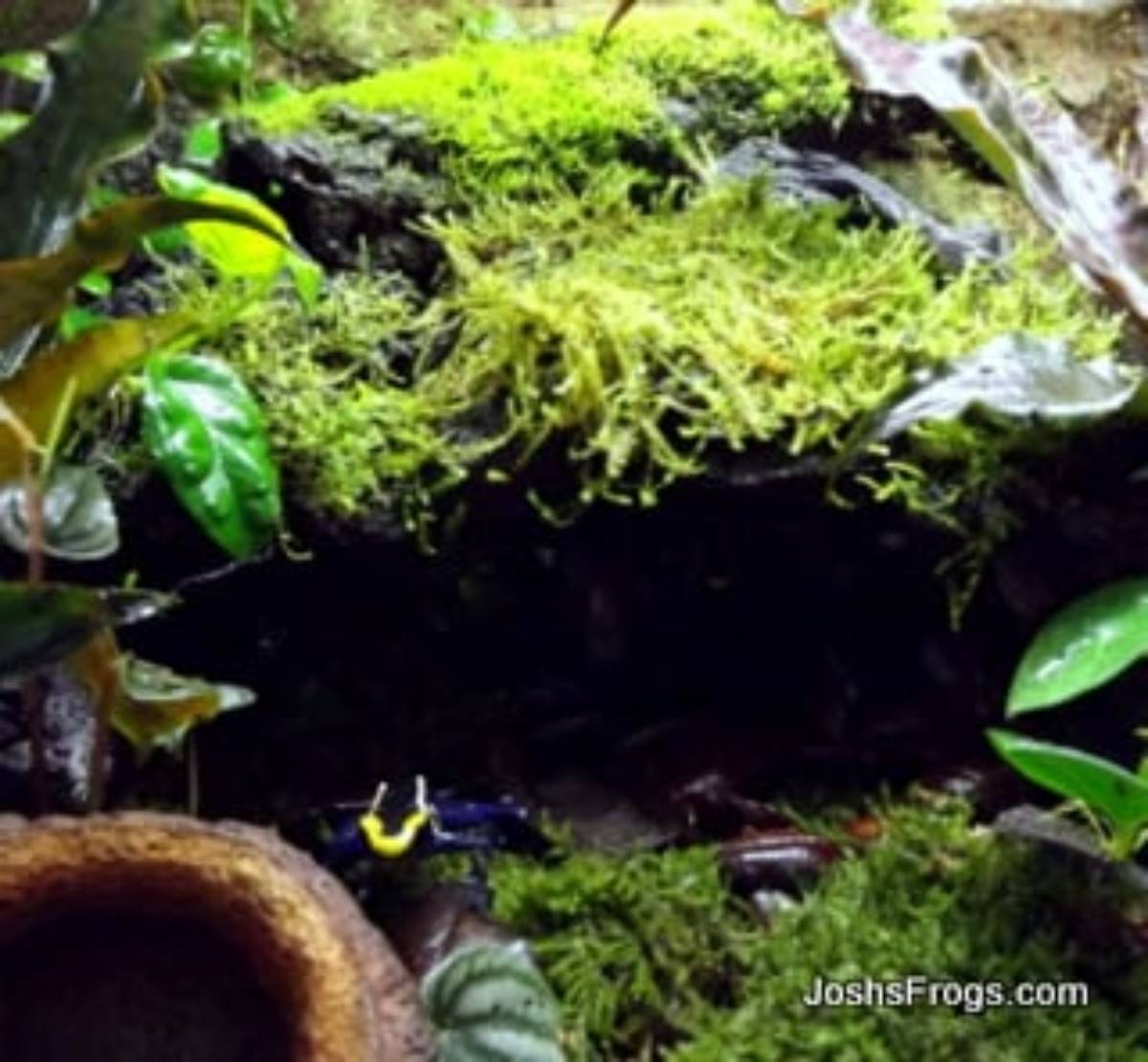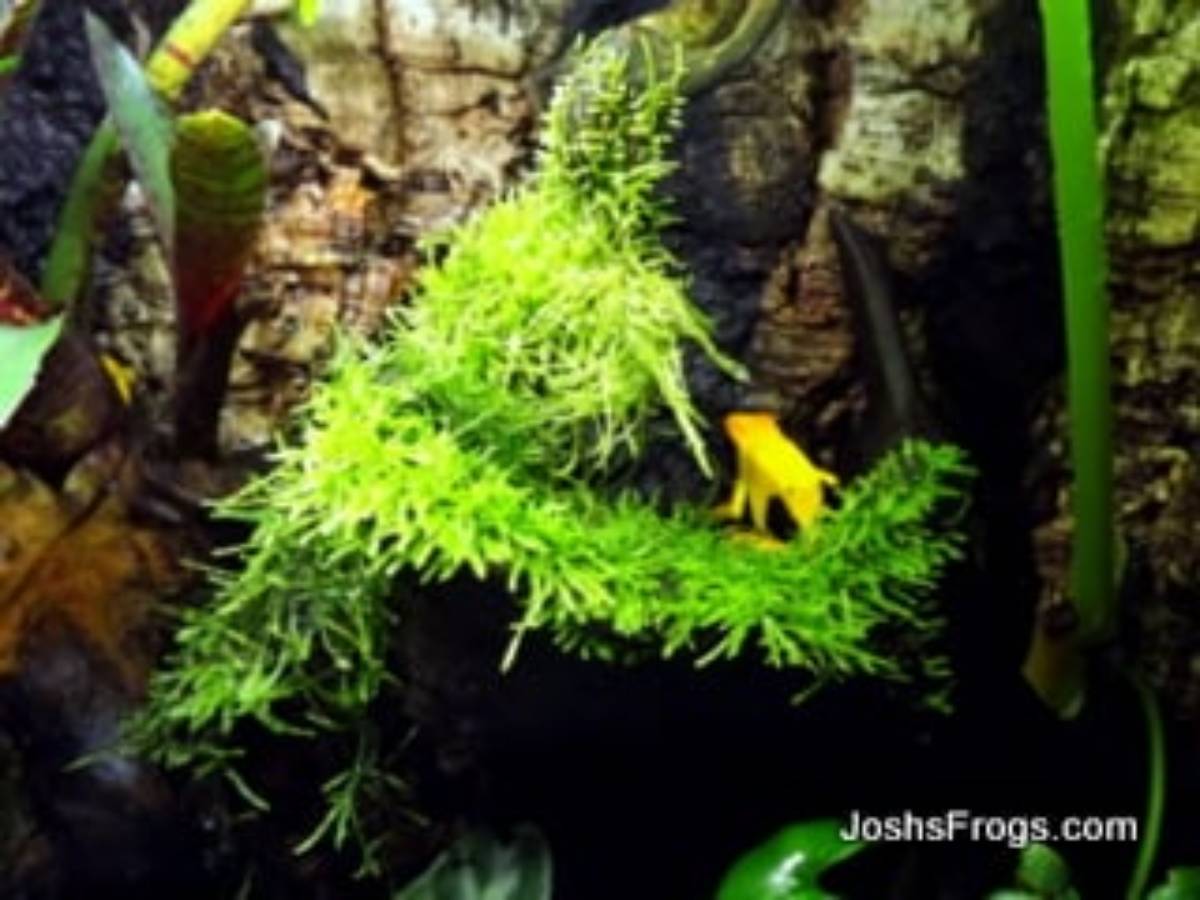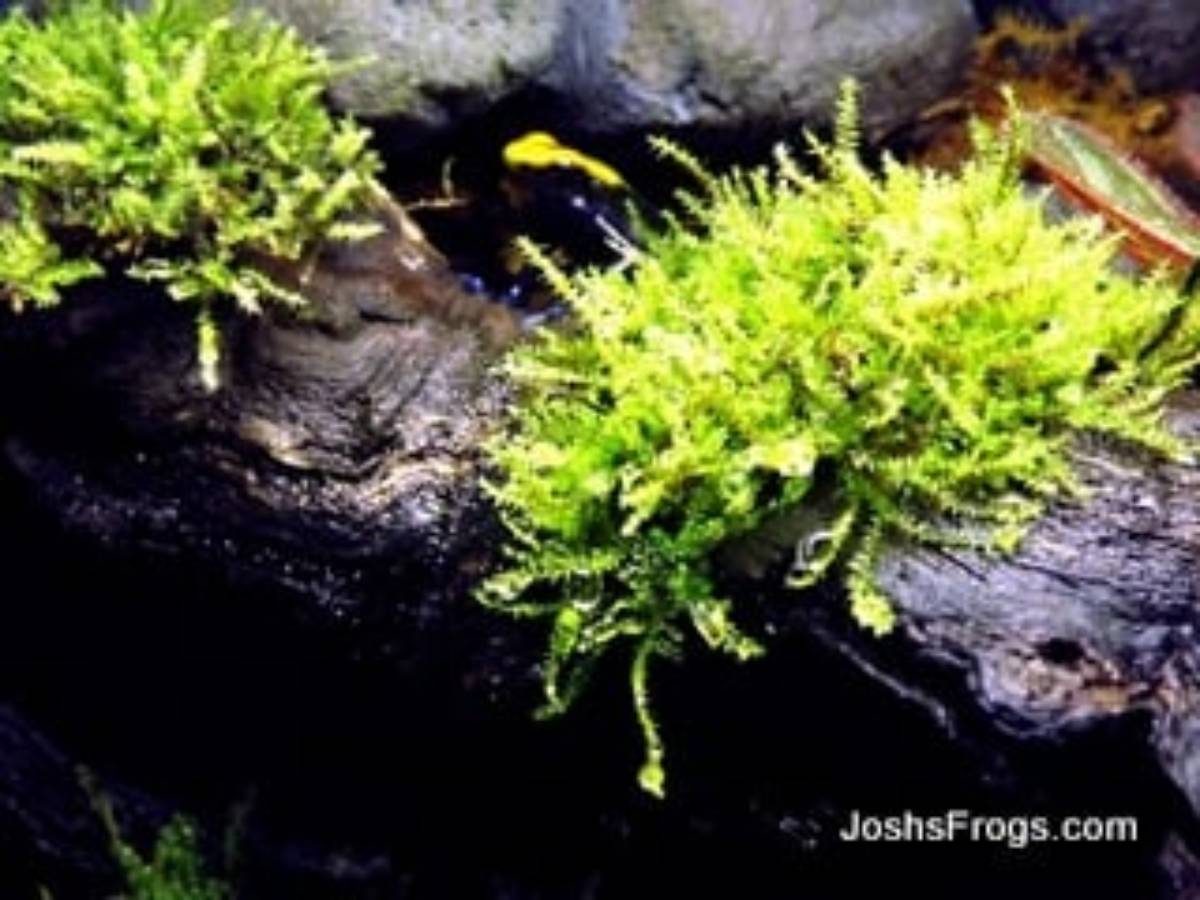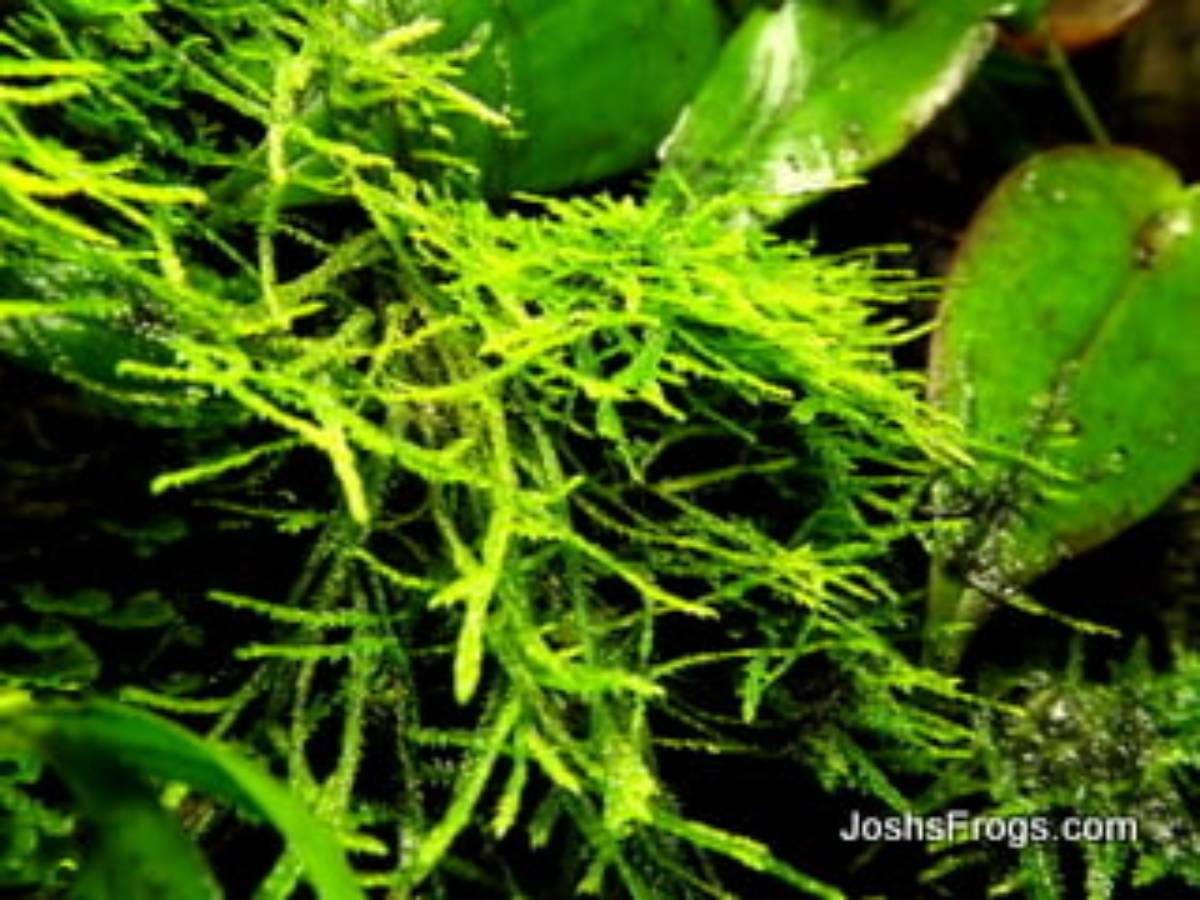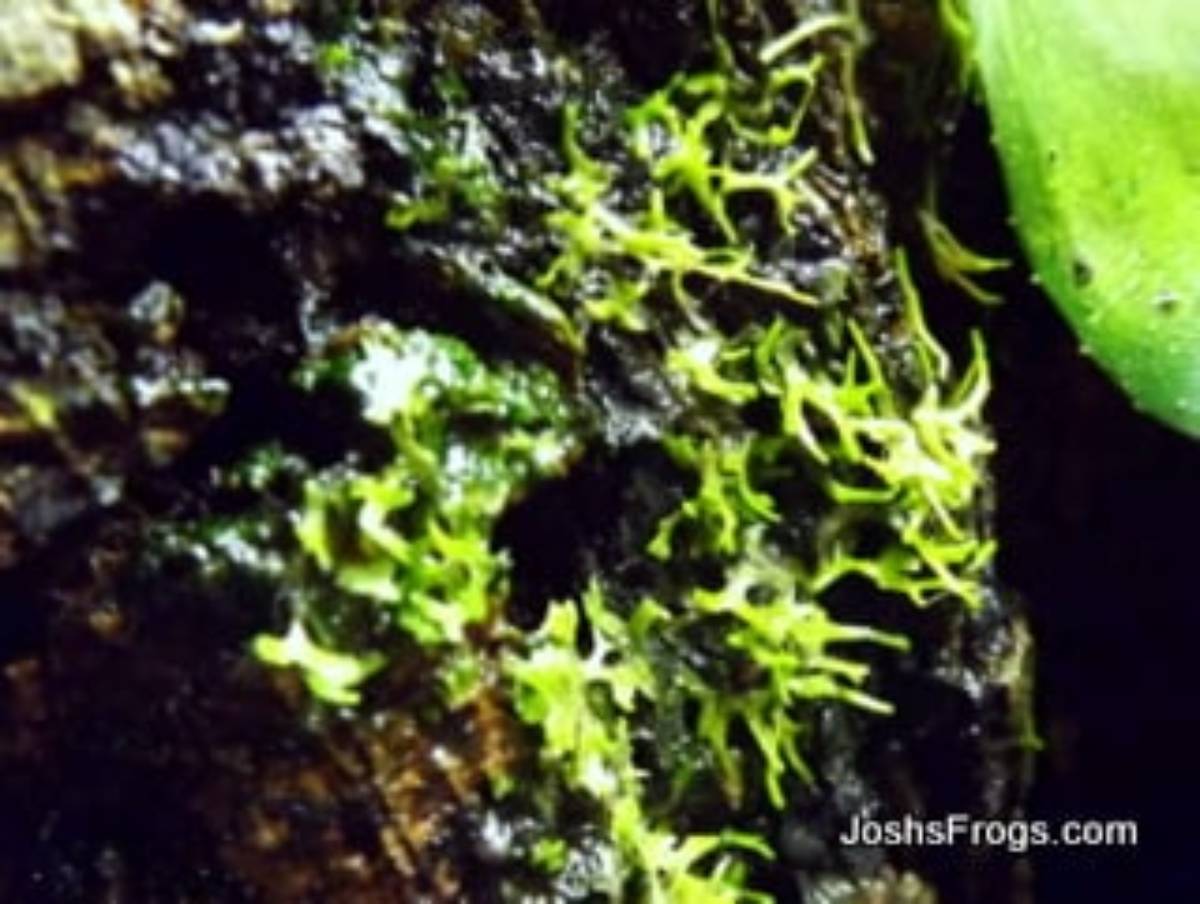Josh's Frogs
Why you should buy from us
Growing Moss Like A Boss
Few images scream "JUNGLE" like a scene full of tropical plants. Undoubtedly, this includes large swaths of lush, green moss. Although moss, a bryophyte (non vascular plant), occurs in tropical climes, it's not an integral part of the typical dart frog environment. Moss makes a nice accent, but it should never be the focus of a dart frog vivarium.
There are four important factors to consider when incorporating moss into a naturalistic vivarium: lighting, water, substrate, and the inhabitants.

A lush vivarium full of moss is possible, if a few key concepts are understood.
Lighting
Most of the literature will classify moss as needing low or moderate lighting. Keep in mind that this refers to moss outside, under the sun, and not moss grown indoors. It's much brighter outside in the shade than it is in a typical vivarium. As a general rule, moss in the vivarium will appreciate all the light it can get.
We've had success growing moss under HOT5 bulbs, as well as LEDs. In the past, when I used T8s to light my vivarium, most moss would not grow. With upgraded lighting, it's not difficult to have lush moss growth in most vivaria.
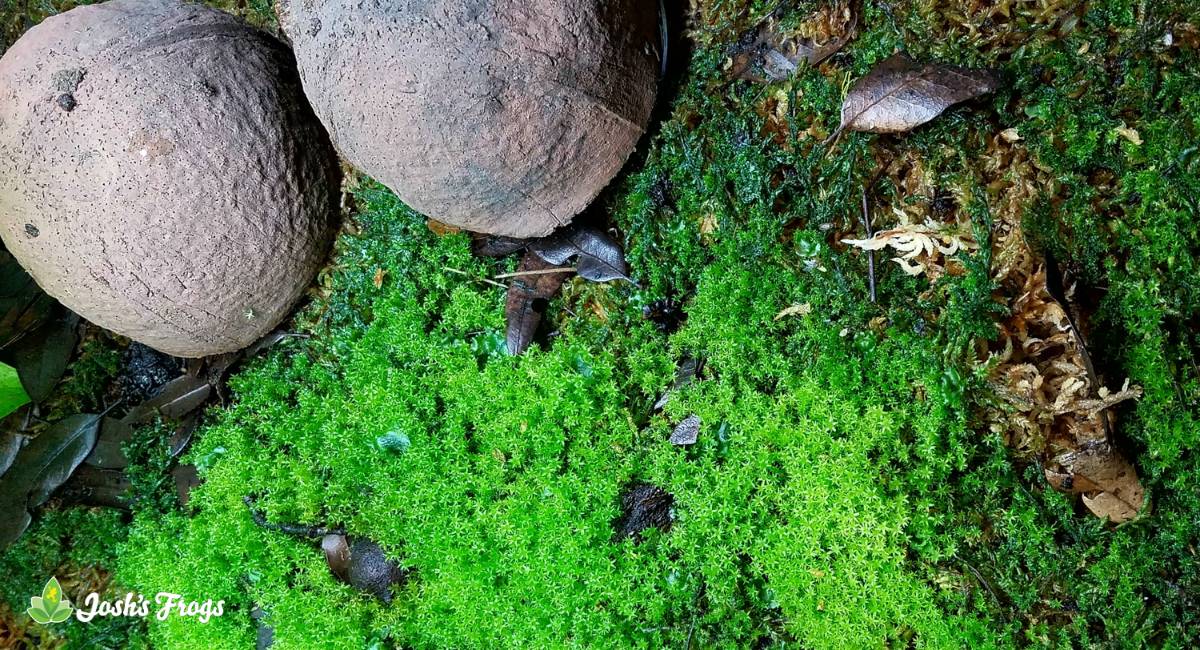
Note the compact, lush growth of this moss under bright LED lighting.
There are 2 primary ways to ensure that your moss gets the lighting it needs: using brighter lighting, or reducing the distance between the moss and the light. Depending what your current light setup is, it may be possible just to get a new bulb, or add a reflector (which can greatly increase the light output on many bulbs). Additionally, placing the moss in the upper reaches of a vivarium can greatly increase the amount of light it gets. Utilizing shorter vivaria to begin with will also go quite a ways in increasing light exposure.


Know who loves tropical moss? Dart Frogs! These beautiful anurans are completely nontoxic in captivity, and easier to keep than ever before!
Check out our dart frog blogs and check out which frogs we have available now!
Light intensity is important to moss growth. Generally the brighter the light, the more compact the moss growth.
Notice the three different growth habits of the same moss in this vivarium, a result from differing light intensity due to distance from the bulb.
Water
With moss, heavy mineral or chemical content in water spells doom. Generally, if the water is safe to use with darts frogs, it'll be fine for moss. Spring, distilled, or reverse osmosis water is safe.
Some mosses, especially those traditionally used in aquariums such as java or riccia (technically a liverwort), need wet, almost saturated conditions. Most other mosses, such as sheet moss or mood moss, actually prefer a bit of air movement, and a chance to dry out a bit between mistings.
If you're not sure what the moss prefers, it's a good idea to split the moss into several sections and try keeping it in different conditions in the vivarium.
Java moss, typically grown in an aquarium, requires more water than many other mosses.
Substrate
Some mosses will happily grow over almost any surface, while many mosses are are more particular of their growing substrate. As a general rule, if the moss does not appear to have 'roots' (moss does not have true roots), the moss will happily grow on almost anything, such as cork or wood.
If the moss appears to have 'roots', and grows in a mat-like fashion, such as mood moss, it generally prefers a soil-like substrate, such as ABG mix or sphagnum. Once again, if you're not sure what your moss likes, split it up and spread it around.
Some mosses are perfectly fine growing directly on wood, and do not require special substrates.
Vivarium Inhabitants
Before purchasing moss, consider what animals will be living in the vivarium. Many animals, such as dart frogs, do not truly benefit from moss. Although it looks great, moss should not be the main ground cover in a vivarium. Most species of dart frogs kept in captivity appreciate a good layer of leaf litter and all the benefits it entails (hiding places, visual barriers, increased microfauna levels), and moss does nothing for them. Moss should be used as an accent – something that looks nice, but should not 'take away' from the needs of the frogs.
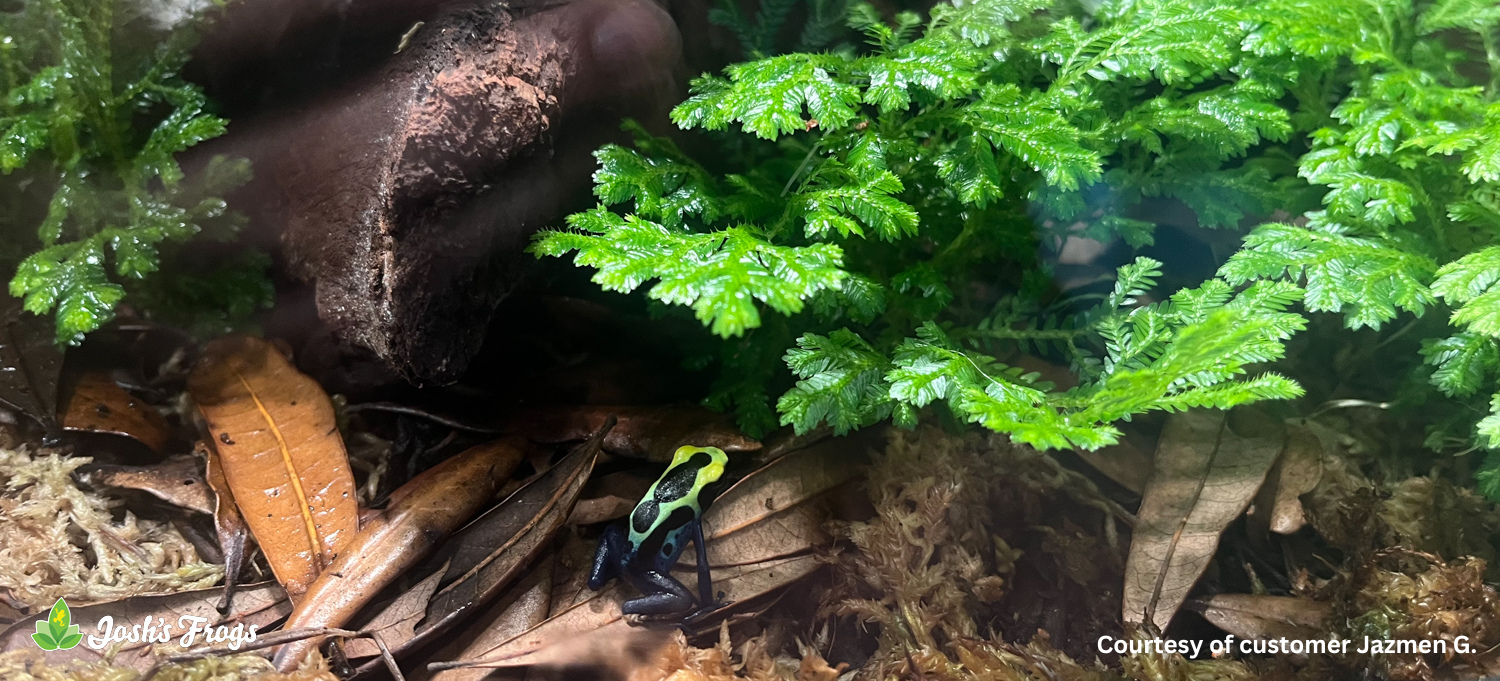
Remember, although moss looks great, it really does not benefit the frogs much. A good layer of leaf litter is far more practical.
Common Vivarium Mosses
Java Moss
Riccia, actually a liverwort.
Josh's Frogs Sheet Moss – the best vivarium moss we sell!
Spikemosses in the Vivarium
Spikemosses can grow quickly in vivaria. Spikemosses, plants of the genus Selaginella, are commonly grouped in with traditional mosses and are sometimes called club mosses. In truth, they are very different plants. Spikemosses do prefer similar conditions, and do quite well in the humid confines of a vivarium. Spikemosses make great ground cover, and generally grow very well from clippings. In fact, Josh's Frogs recommends dividing up any spikemosses before putting them in the vivarium, and planting them in different areas. Spikemosses can be tricky to grow in improper conditions, but grow quickly once established.
Conclusion
Mosses will always have a special place in the vivarium. Few other plants can complete with it's lush growth habit and intense green coloration. Even though moss is widely available, keep in mind that not all mosses thrive in any condition. Considerations must be made to truly be able to grow moss like a boss.
Ready to purchase some great moss for your terrarium or vivarium? Wanting that lush, green carpet look? Josh's Frogs Fresh Moss is for you!
Try it—you'll love it, and be growing moss like a boss in no time!
Outside Links:
- Other's experiences with different mosses (NOT the ones we sell): Growing Moss In Terrariums


